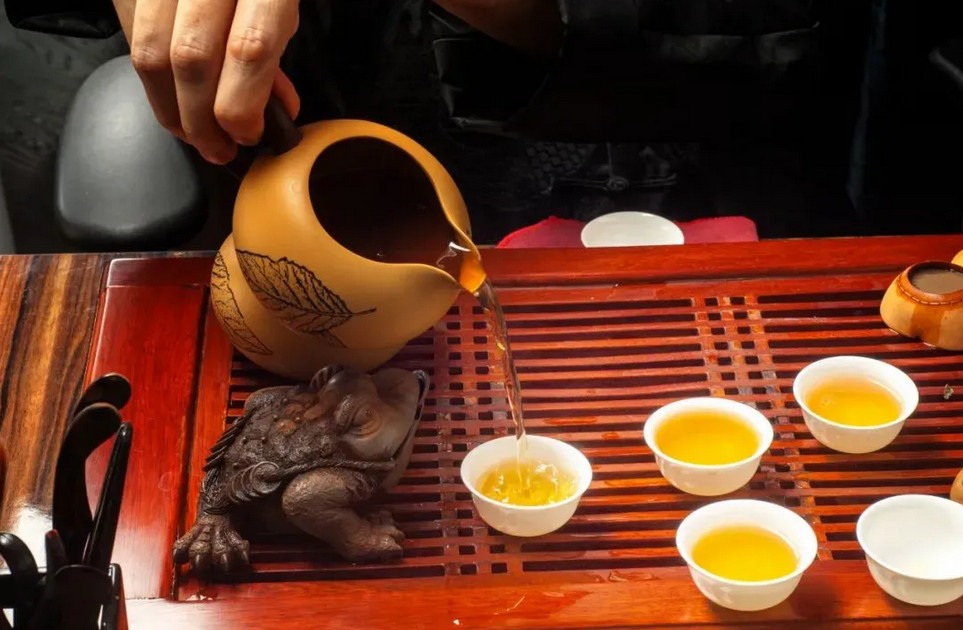China has a rich and ancient history with tea, filled with the wisdom and emotions of countless thinkers and poets. In tea gardens, the hard work of farmers nourishes the tea plants, while the bright sunshine helps every tender leaf thrive. When we sip tea, our minds find peace, and our thoughts expand in the fragrant atmosphere. Chinese tea, with its ever-evolving varieties and unique processing methods, creates a captivating world of tea culture that touches our hearts. We are immersed in this rich cultural heritage and artistic beauty, finding tranquility and comfort in a cup of Chinese tea. It embodies the poetry of nature, the memories of time, and a refuge for our souls. Let’s explore the magic of tea together, savoring its subtle aroma and experiencing the wonderful blend of tea culture and life.
1. Types of Tea
Tea can be classified in various ways, depending on different criteria. Based on fermentation levels and methods, tea can be divided into four main categories: unfermented tea, partially fermented tea, fully fermented tea, and post-fermented tea. If we look at the seasons when the tea is harvested, we can categorize it into spring tea, summer tea, autumn tea, and winter tea. However, these seasonal names don’t necessarily indicate quality; different types of tea are best suited for different seasons, and spring tea isn’t always better than summer tea. Additionally, we can classify tea based on whether it is flavored or not, distinguishing between “plain tea” and “scented” or “flavored tea.” Plain tea is just that—tea without any added flavors. For example, if jasmine flowers are added, it becomes jasmine tea, and if ginseng powder or leaves are mixed in, it’s called ginseng tea. We can also categorize tea based on its shape, such as loose tea, compressed tea, and matcha.
Among all these classifications, the most widely recognized and authoritative are the traditional six categories of tea in China. The fermentation level and method have the most significant impact on the flavor of the tea. Below, I’ll break down the six major types of tea and their characteristics to give you a clearer understanding.
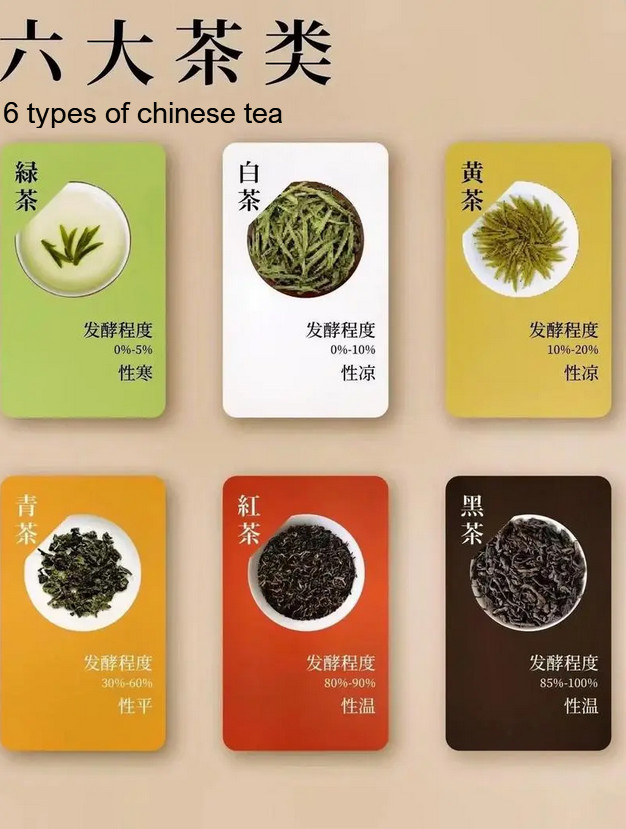
2. The Six Major Types of Tea: Characteristics, Benefits, Suitable Drinkers, and Brewing Methods
1. Green Tea (Fermentation Level: 0) — Unfermented Tea
Green tea is unfermented, maintaining a green color that resembles the fresh leaves just picked. Some green tea leaves may appear dark green, but once brewed, they turn a bright green without any red hues.
- Characteristics: Clear soup, green leaves, fresh aroma, and a refreshing taste.
- Dry Tea: The color can be bright green, emerald green, or yellow-green, but it can change color if left out or exposed to hot air for too long.
- Tea Soup: It appears yellow-green.
- Raw Material: Made from tender buds and leaves, it’s best consumed fresh.
- Representative Teas: Longjing (Dragon Well), Biluochun, Huangshan Maofeng, etc.
- Main Processing Steps: Picking → Fixing (kill green) → Rolling → Drying.
- Benefits: Helps with radiation protection, antibacterial properties, anti-inflammatory effects, thirst-quenching, cooling, refreshing, aiding digestion, and weight loss.
- Suitable Drinkers: Great for busy young people who work on computers a lot, as well as those with a hot constitution or high stomach heat.
- Brewing Method: The ideal water temperature for brewing green tea is around 85°C (185°F). Steep for about 2-3 minutes, using a tea-to-water ratio of 1:50. You can use a porcelain cup or a clear glass cup, and it’s best not to cover it while brewing.
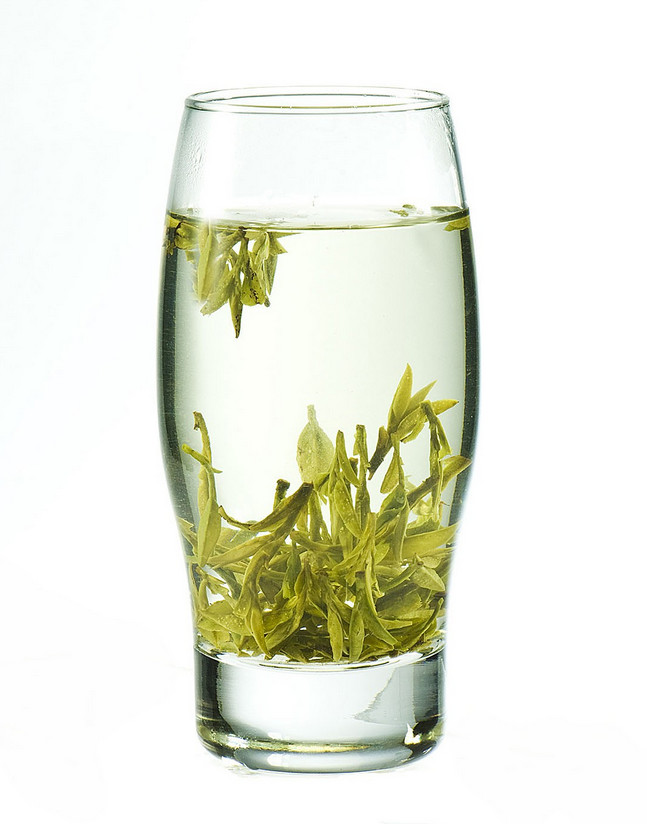
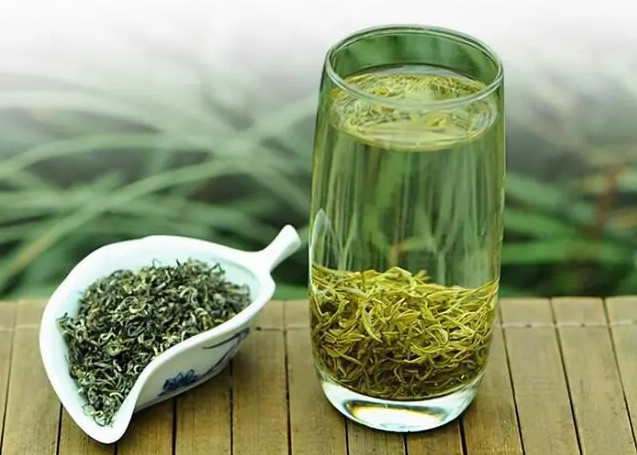
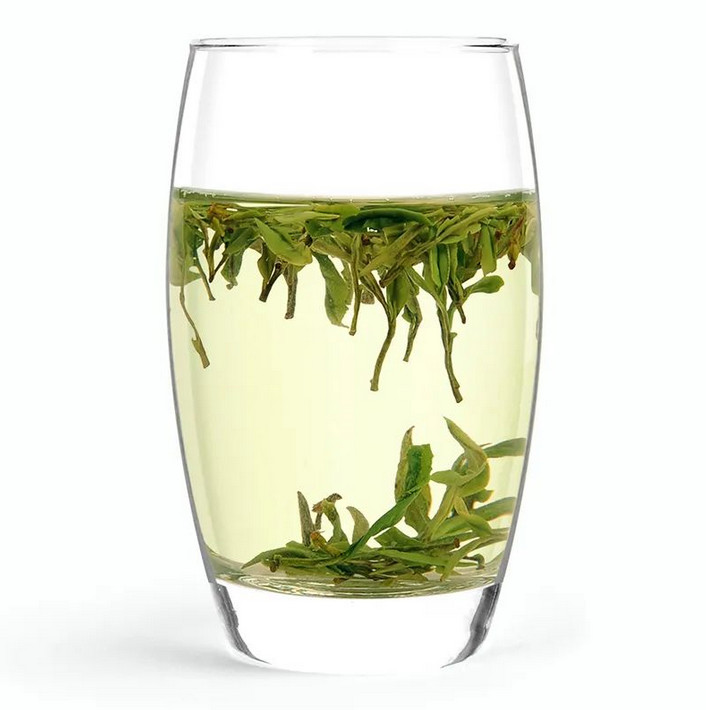
Green tea is made from tender buds and leaves, which are dried and then quickly fixed to prevent oxidation. This keeps the tea’s delicate, refreshing flavor close to that of the natural plant. Plus, when brewed, the leaves unfurl beautifully in the cup, making it visually appealing—this is why clear glass cups are often used for green tea.
2. Black Tea (Fermentation Level: 70%-90%) — Fully Fermented Tea
Black tea is fully fermented, giving it a rich, dark color and a bold flavor. It’s one of the most popular types of tea worldwide.
- Characteristics: Dark color, strong aroma, and a robust taste.
- Dry Tea: The leaves are usually dark brown or black.
- Tea Soup: It appears deep amber or reddish-brown.
- Raw Material: Made from mature leaves, which are fully oxidized.
- Representative Teas: Keemun, Dianhong, and Lapsang Souchong.
- Main Processing Steps: Picking → Withering → Rolling → Fermentation → Drying.
- Benefits: Boosts heart health, aids digestion, and provides a good energy boost.
- Suitable Drinkers: Great for those who enjoy strong flavors and need a caffeine kick, like students during exam season.
- Brewing Method: Brew black tea with boiling water (around 100°C or 212°F) for 3-5 minutes. Use a tea-to-water ratio of about 1:50. You can use any type of cup, but a teapot is often preferred for a more traditional experience.
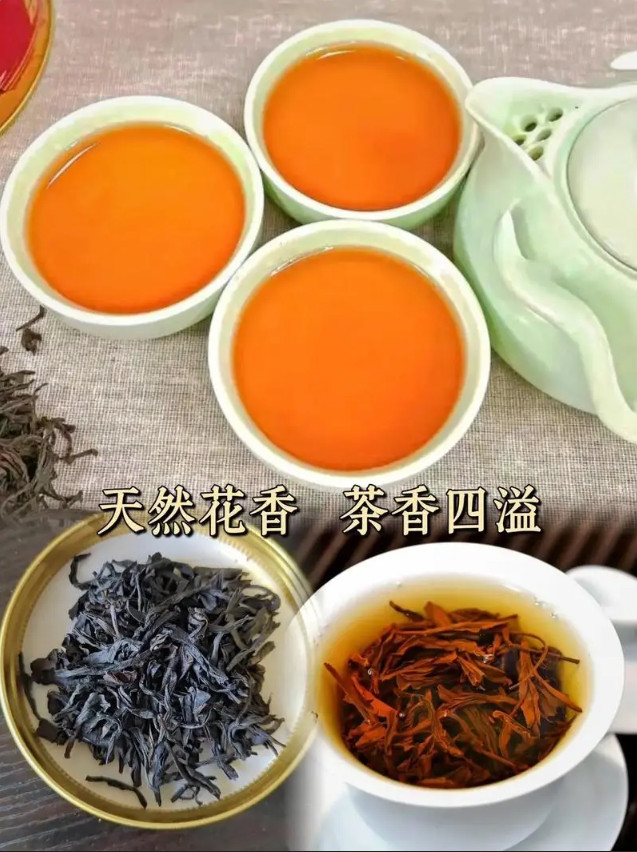
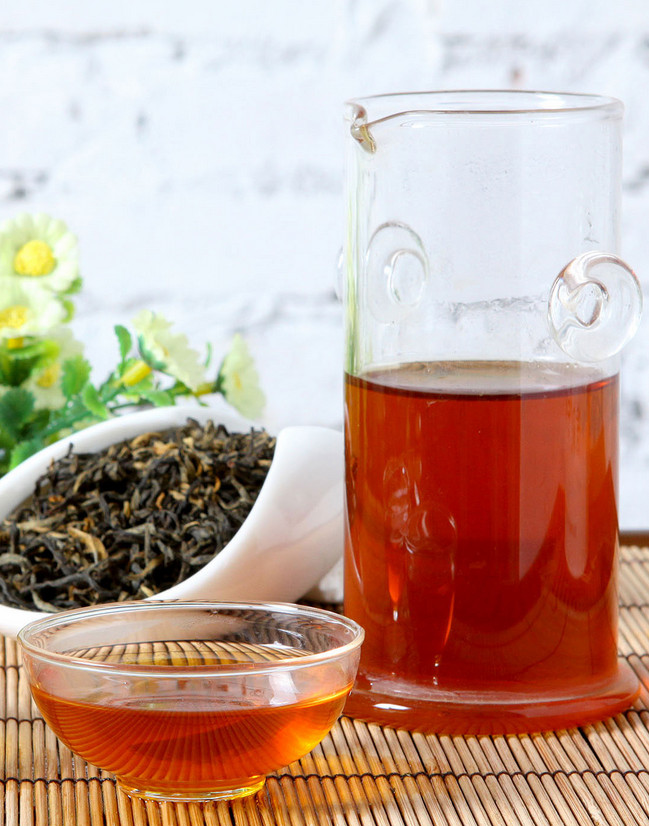
3. Oolong Tea (Fermentation Level: 15-70) — Partially Fermented Tea
Oolong tea is partially fermented, which gives it a unique flavor profile that falls between green and black tea.
- Characteristics: Complex aroma, smooth taste, and a beautiful amber color.
- Dry Tea: The leaves can be dark green or brown, often twisted or rolled.
- Tea Soup: It appears golden yellow or amber.
- Raw Material: Made from semi-oxidized leaves.
- Representative Teas: Tieguanyin (Iron Goddess of Mercy) and Da Hong Pao.
- Main Processing Steps: Picking → Withering → Rolling → Partial Fermentation → Drying.
- Benefits: Aids in weight management, boosts metabolism, and improves mental alertness.
- Suitable Drinkers: Perfect for those who enjoy a balance of flavors and want a tea that can be steeped multiple times.
- Brewing Method: Brew oolong tea at around 90°C (194°F) for 3-5 minutes. Use a tea-to-water ratio of about 1:50. A teapot or a Gaiwan (a traditional Chinese tea vessel) works well for brewing.
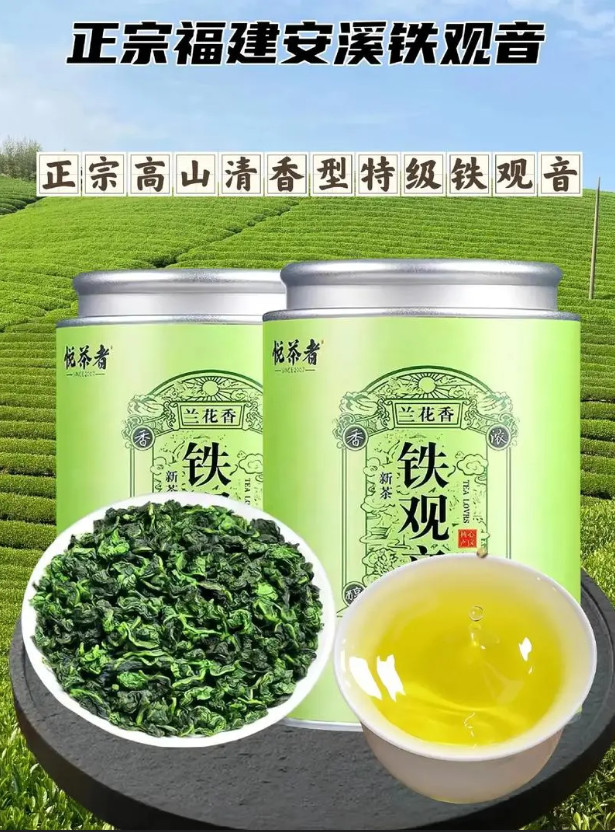
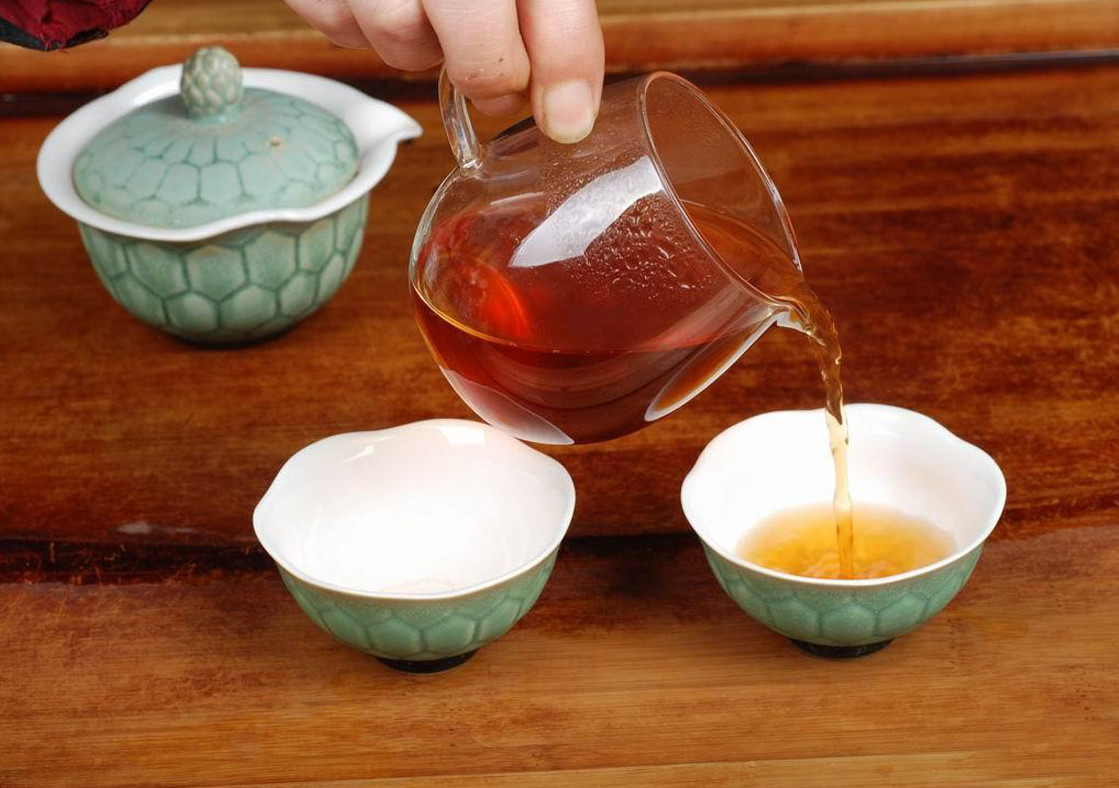
4. White Tea (Fermentation Level: 5-10) — Unfermented Tea
White tea is the least processed of all tea types, made from young leaves and buds.
- Characteristics: Light flavor, delicate aroma, and a pale color.
- Dry Tea: The leaves are usually silvery or light green.
- Tea Soup: It appears pale yellow or light green.
- Raw Material: Made from young buds and leaves, often covered in fine white hairs.
- Representative Teas: Silver Needle and White Peony.
- Main Processing Steps: Picking → Withering → Drying.
- Benefits: High in antioxidants, supports skin health, and promotes relaxation.
- Suitable Drinkers: Ideal for those who prefer a subtle, gentle flavor and want a calming experience.
- Brewing Method: Brew white tea at around 80°C (176°F) for 4-5 minutes. Use a tea-to-water ratio of about 1:50. A glass or porcelain cup is great for showcasing its delicate color.
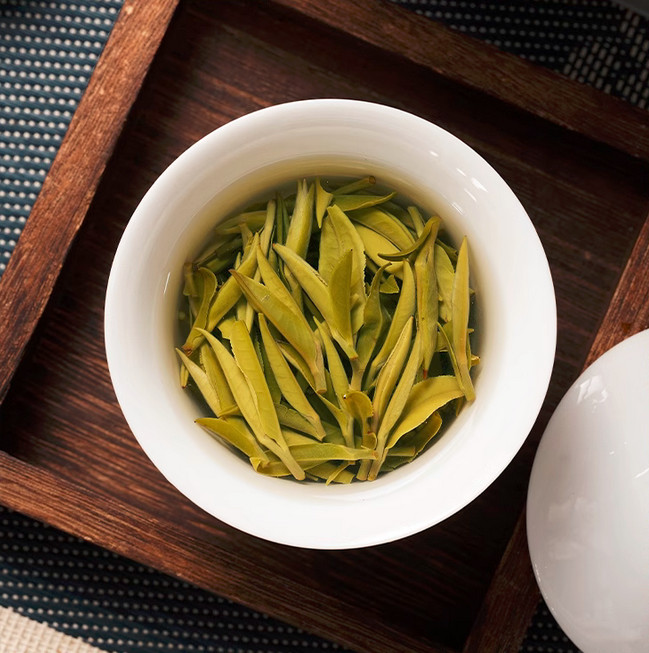
5. Yellow Tea (Fermentation Level: 10-20) — Slightly Fermented Tea
Yellow tea is similar to green tea but undergoes a longer drying process, giving it a unique flavor.
- Characteristics: Smooth, mellow taste with a slight sweetness.
- Dry Tea: The leaves are yellowish-green.
- Tea Soup: It appears light yellow.
- Raw Material: Made from young leaves, similar to green tea.
- Representative Teas: Junshan Yinzhen and Huoshan Huangya.
- Main Processing Steps: Picking → Withering → Sealing Yellow (a special drying process) → Drying.
- Benefits: Good for digestion, helps with weight loss, and has a calming effect.
- Suitable Drinkers: Great for those who enjoy a mild flavor and want something a bit different from the usual teas.
- Brewing Method: Brew yellow tea at around 85°C (185°F) for 3-4 minutes. Use a tea-to-water ratio of about 1:50. A porcelain cup is recommended for the best experience.
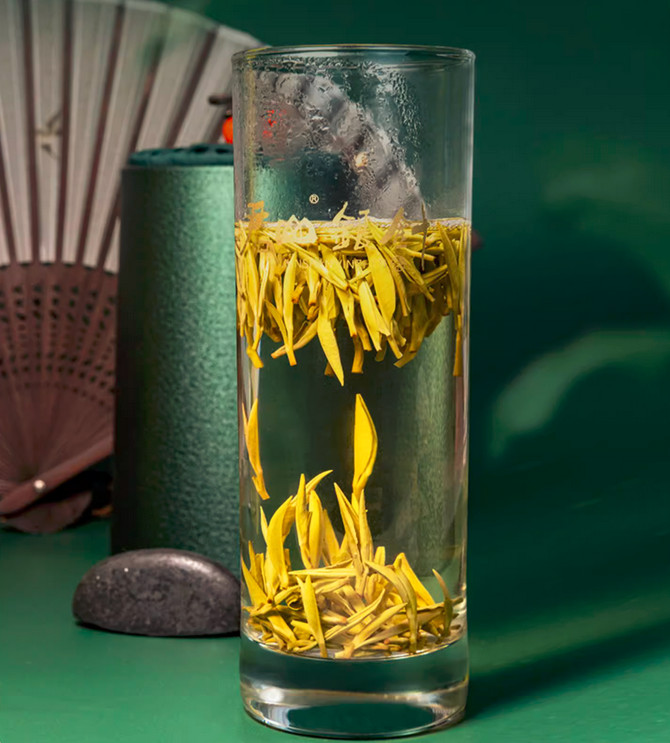
6. Post-Fermented Tea (Fermentation Level: Varies) — Aged Tea
Post-fermented tea, like Pu-erh, undergoes a unique aging process that develops its flavor over time.
- Characteristics: Earthy flavor, rich aroma, and dark color.
- Dry Tea: The leaves can be dark brown or black.
- Tea Soup: It appears dark brown or reddish.
- Raw Material: Made from aged leaves, often compressed into cakes.
- Representative Teas: Raw Pu-erh and Ripe Pu-erh.
- Main Processing Steps: Picking → Withering → Rolling → Fermentation (for ripe Pu-erh) → Aging.
- Benefits: Aids digestion, lowers cholesterol, and can improve gut health.
- Suitable Drinkers: Perfect for those who appreciate complex flavors and enjoy the ritual of aging tea.
- Brewing Method: Brew post-fermented tea with boiling water (around 100°C or 212°F) for 3-5 minutes. Use a tea-to-water ratio of about 1:50. A Yixing teapot or a Gaiwan is ideal for brewing.
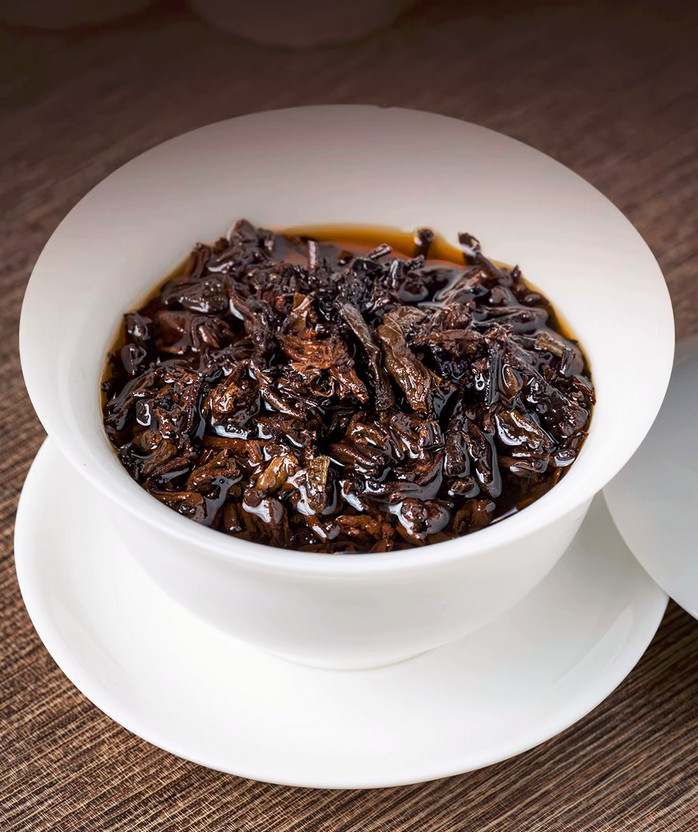
In conclusion, the world of Chinese tea is vast and diverse, offering something for everyone. Whether you prefer the refreshing taste of green tea or the boldness of black tea, there’s a type of tea that can suit your mood and needs. So next time you brew a cup, take a moment to appreciate the rich history and culture behind it!
